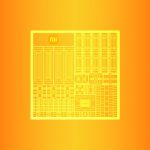Igor Wallossek of Igors Lab has reported that NVIDIA and its AIBs are working round the clock to find a resolution to the impending GeForce RTX 4090 16-pin connector issues.
NVIDIA & AIBs Team Up To Investigate and Resolve GeForce RTX 4090’s 16-Pin Adapter & Connector Issues
A few days ago, we reported the first few cases of the new 16-pin connectors featured on NVIDIA’s GeForce RTX 4090 graphics cards burning up and melting. The issue was earlier thought to be due to the bends within the 35mm clearance that PCI-SIG had clearly stated would cause huge thermal variance and lead to damage. But over the past few days, testing from various professionals in the tech industry has given us more clues as to what might have happened.
Ronaldo Buassali of TecLab and GALAX’s OC team hosted two live streams where he demonstrated the 16-pin connector and torture tested it through various loads, even up to 1530W (sustained). He discovered that an improper connection of the 16-pin cable can lead to large thermal variances and that may indeed be what’s happening with the adapters.
As users bend the adapter, certain cables can become loose, leading to improper contact force. This can cause thermal variance to occur and we have already seen that a faulty connection can lead to over 100C temps which would be enough to melt and damage the plugs over a certain duration or prolonged usage.
Loose connection testing by GALAX with a 12VHPWR connector.
Loose connection = 100C+
Good connecttion = 60-70C
That’s while the connector is pulling a sustained 1530W load. There’s more here and it is possible that bending is not the main issue here, force contact is. pic.twitter.com/HPIRLjjVlA
— Hassan Mujtaba (@hms1193) October 26, 2022
NVIDIA just notified all AIC this morning… All damaged cards need to be sent directly to HQ for failure analysis, this is first time… Even a few years ago when 2080 Ti got issue with Micron, they didn’t do this.
It is good to know that NVIDIA is actively participating with its AIB to resolve this issue as early as possible. The owner of the first graphics card who reported this issue also stated the same thing that NVIDIA has asked Gigabyte for the damaged graphics card and the user will get a replacement from Gigabyte. NVIDIA knows this is a serious issue and they are trying their best to resolve this & provide us with further clarification as to what went wrong.
Igor has also run his own tests and found out that the main culprit is the NVIDIA-supplied 16-pin adapter which has an extremely poor build quality.
Now the designs of the individual manufacturers are also increasingly coming into focus. Three community members with a 12VHPWR PSU adapter from be quiet! have already posted in the forum. Individual pins came loose from the connector. No fire started! pic.twitter.com/L0sEEqZVoX
— Andreas Schilling (@aschilling) October 25, 2022
Each cable contact on the NVIDIA-supplied 16-pin adapter can easily become loose and it’s not just this adapter but certain ATX 3.0 PSUs may also have similar issues. Following is the summary provided by Igor:
The problem is not the 12VHPWR connection as such, nor the repeated plugging or unplugging.
Standard-compliant power supply cables from brand manufacturers are NOT affected by this so far.
The current trigger is NVIDIA’s own adapter to 4x 8-pin in the accessories, whose inferior quality can lead to failures and has already caused damage in single cases.
Splitting each of the four 14AWG leads onto each of the 6 pins in the 12VHPWR connector of the adapter by soldering them onto bridges that are much too thin is dangerous because the ends of the leads can break off at the solder joint (e.g., when kinked or bent several times).
Bending or kinking the wires directly at the connector of the adapter puts too much pressure on the solder joints and bridges, so that they can break off.
The inner bridge between the pins is too thin (resulting cross section) to compensate the current flow on two or three instead of four connected 12V lines.
NVIDIA has already been informed in advance and the data and pictures were also provided by be quiet! directly to the R&D department.
There’s definitely a problem but there are certain people who are trying to make it seem like a non-issue by running bend tests on their cards for a few hours when in fact PCI-SIG itself has stated that damage starts to occur around 10-30 hours of prolonged or sustained use.
2 of 9
I can go ahead and say that all three of my RTX 4090 samples have been running fine since I started testing them but I can not 100% recreate the conditions that led to melting in the above cases. It requires long hours of tests and data to evaluate what’s really going on and actual specialists such as Igor and Ronaldo are doing great work in addressing these before NVIDIA discloses their official findings.
The post NVIDIA Is Working With Its AIB Partners To Quickly Resolve GeForce RTX 4090 16-Pin Adapter & Connector Issues by Hassan Mujtaba appeared first on Wccftech.







